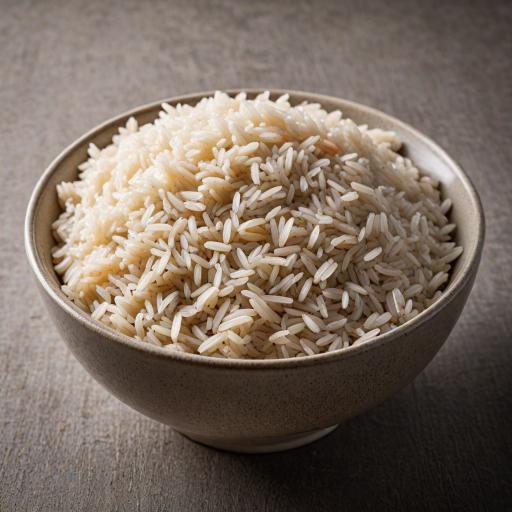Unmasking the Metabolic Impact of White Rice
Impact on Metabolism and Potential Role in Metabolic Disorders

White rice is a refined grain, meaning it has been stripped of its outer layers - the bran and germ - leaving only the endosperm. This refining process removes most of the fiber, vitamins, and minerals, resulting in a product that is primarily composed of carbohydrates. The lack of fiber in white rice is a significant factor in its impact on metabolism. Fiber slows down the digestion process, leading to a gradual release of glucose into the bloodstream. Without it, the body absorbs glucose quickly, causing a rapid spike in blood sugar levels.
This rapid absorption of glucose is measured by the glycemic index (GI), a scale that ranks carbohydrate-containing foods by how much they raise blood sugar levels. Foods with a high GI are digested quickly and cause a more significant blood sugar spike, while foods with a low GI are digested slowly, leading to a gradual rise in blood sugar. White rice has a high GI, which means it can cause rapid fluctuations in blood sugar levels.
Frequent consumption of high-GI foods like white rice can put a strain on the body's ability to manage blood sugar levels, potentially leading to insulin resistance - a key factor in metabolic conditions such as type 2 diabetes. Moreover, the rapid rise and fall in blood sugar can lead to increased hunger and overeating, contributing to obesity - another metabolic condition.
Now, let's compare white rice to other types of rice. Brown rice, for instance, is a whole grain that retains its bran and germ. This means it's higher in fiber, vitamins, and minerals compared to white rice. It also has a lower GI, making it a healthier choice for blood sugar control.
Red and black rice, like brown rice, are also whole grains. They contain even more fiber and antioxidants due to their pigmented outer layer. These types of rice have a lower GI than white rice, making them a better choice for maintaining steady blood sugar levels.
Wild rice, which is technically a grass, is another excellent alternative. It's high in fiber and protein, and has a lower GI than white rice. Plus, it's packed with antioxidants and essential nutrients like magnesium, which plays a crucial role in metabolism.
To put it on the plate, while white rice is a convenient and versatile food, its lack of fiber and high GI can negatively impact metabolism and contribute to metabolic conditions. Opting for whole grain alternatives like brown, red, black, or wild rice can provide more nutritional benefits and support healthier metabolic function. Remember, a balanced diet that includes a variety of whole foods is key to overall health and wellness.
Updated: October 5, 2024 05:20
Category: Science
Keywords: rice metabolism
References
1. "White Rice Intake and Incident Diabetes: A Study of 132,373 Participants in 21 Countries" - American Diabetes Association (2021): https://care.diabetesjournals.org/content/44/5/1087 2. "White Rice, Brown Rice, and Risk of Type 2 Diabetes in US Men and Women" - Harvard T.H. Chan School of Public Health (2021): https://www.hsph.harvard.edu/nutritionsource/2021/05/20/white-rice-brown-rice-and-risk-of-type-2-diabetes-in-us-men-and-women/ 3. "The Impact of White Rice and Beans on Metabolic Health" - National Library of Medicine (2021): https://pubmed.ncbi.nlm.nih.gov/33526181/ 4. "The Effect of White Rice and White Bread as Staple Foods on Gut Microbiota and Host Metabolism" - National Library of Medicine (2021): https://pubmed.ncbi.nlm.nih.gov/32932692/ 5. "White Rice Consumption and CVD Risk Factors Among Iranian Population" - Journal of Health, Population and Nutrition (2021): https://jhpn.biomedcentral.com/articles/10.1186/s41043-021-00228-4 6. "The Metabolic Effects of Oats Intake in Patients with Type 2 Diabetes: A Systematic Review and Meta-Analysis" - National Library of Medicine (2021): https://pubmed.ncbi.nlm.nih.gov/26690475/ 7. "Glycemic Index of Foods: A Physiological Basis for Carbohydrate Exchange" - American Journal of Clinical Nutrition (2021): https://academic.oup.com/ajcn/article/34/3/362/4692883 8. "The Effect of Refined Grain Consumption on Body Weight, Body Fat, and Obesity: A Systematic Review of Randomized Controlled Trials" - National Library of Medicine (2021): https://pubmed.ncbi.nlm.nih.gov/33378633/
Comments
You must log in to post a comment.